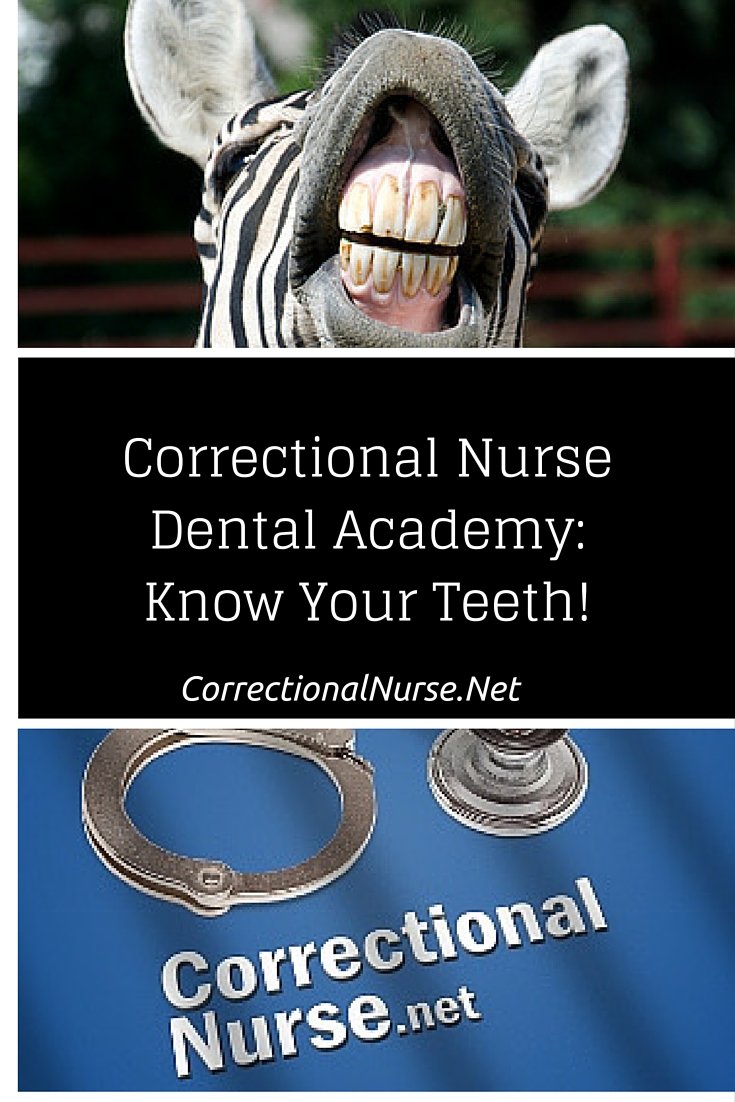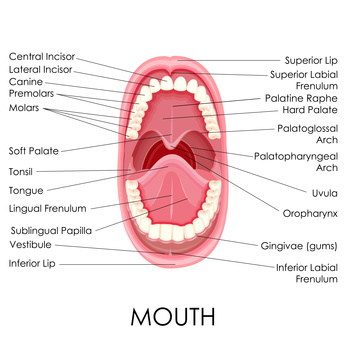 This is Paige’s first week as a correctional nurse at a small state prison. While on night shift over the weekend one of the inmates urgently asks to see the nurse about a sore tooth. Paige needs to evaluate this patient’s condition to determine if the on-call physician contacted or if he can be scheduled to see the dentist on Monday. Once she has made her evaluation, how does she document her findings?
This is Paige’s first week as a correctional nurse at a small state prison. While on night shift over the weekend one of the inmates urgently asks to see the nurse about a sore tooth. Paige needs to evaluate this patient’s condition to determine if the on-call physician contacted or if he can be scheduled to see the dentist on Monday. Once she has made her evaluation, how does she document her findings?
Nurses typically get very little in the way of dental anatomy or dental health concerns in nursing school. Yet, many correctional patients have dental and oral conditions that need evaluated, treated or triaged by a nurse. A review of basic oral and dental anatomy is a helpful start for gaining an understanding of dental evaluation and treatment. Terminology is especially important for documenting assessment findings.
Dental
A tooth has two main sections: the crown and the root. The crown sits above the gum line and is covered by enamel. Under the enamel is dentin and in the center of the tooth is the pulp. This holds the nerves and blood vessels that supply the tooth. The root is below the gum line and is covered by cementum. Cementum is softer than enamel.

Upper (maxillary) and lower (mandibular) teeth are made up of four types: incisor, canine, premolar (bicuspid), and molar. When determining tooth pain, injury, or condition, it is helpful to document the location and type of tooth. For example: “Severe pain localized to right maxillary canine tooth”.
Adults have a total of 32 teeth; 16 for both maxillary and mandibular rows. Although the dental profession uses a universal numbering system, unless you are required and trained to use it, it is best to document descriptive locations as in the example above.

Oral Anatomy
Many dental conditions also involve other structures in the mouth and documenting location and size is important.
The roof of the mouth consists of a hard palate as a foundation to the maxillary teeth and a soft palate extending back to the oropharanx. The floor of the mouth is a foundation for the mandibular teeth and connects the tongue at the posterior end near the oropharanx. Salivary glands include parotid, submandibular (or submaxillary), and sublingual (an excellent illustration of gland locations can be found HERE).
The cheeks encircle the mouth interior and are lined with protective mucosa. This mucosa is firmer over the gum area. When identifying locations within the mouth, especially teeth, the cheek side of the structure is referred to as ‘buccal’ and the tongue side of the structure is referred to as “lingual”.
Documenting a Dental Condition
Fortunately, Paige’s prison health unit had a dental chart posted that provided guidance as to the various terms needed to appropriately document this patient’s condition. The sore tooth was actually a left lower bicuspid and it had an ulcer on the buccal side just below the gum line. Paige instructed her patient on saline mouth rinses and avoiding high spice or high acid foods that might irritate the ulcer. She scheduled the patient to return to medical in 3 days for a nurse evaluation. If the ulcer was not healing, she would consider a medical evaluation to determine a possible underlying condition.
Have you had challenging dental conditions in your correctional nursing practice? Share your tips in the comments section of this post.
Leave a Reply